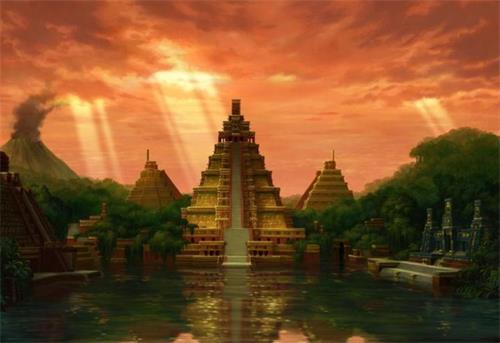
During the middle of the 16th century, Francisco de Orellana, a Spanish explorer, asserted that he had chanced upon a remarkably sophisticated civilization, known as the Kingdom of Gold, nestled deep within the Amazon rainforest. This civilization was described as complex and prosperous, with magnificent architecture and geoglyphs, rivaling the Inca Empire of the time. However, decades later, other explorers returned to the jungle, only to find primitive, underdeveloped tribes. The Kingdom of Gold seemingly disappeared completely and suddenly, leaving no signs behind. Consequently, a crucial question emerges: what caused the downfall of this civilization?
At the time, South America had already been conquered by Spanish colonizers, including the Inca Empire and surrounding areas. However, they had not shown much interest in the towns hidden within the Amazon rainforest. Scholars widely believe that the disappearance of the Kingdom of Gold is linked to the epidemics brought by European colonizers. Due to the relative isolation of the Amazon region, the local inhabitants had little to no exposure to foreign pathogens.
However, with the trade routes opening between the Inca Empire, other indigenous tribes, and the outside world, deadly diseases were introduced into the Amazon jungle. The residents, with no immunity, quickly fell ill, and the epidemics spread rapidly, leading to massive casualties. The loss of the workforce caused the collapse of the rainforest civilization, and its former glory faded quickly. Geoglyphs and ancient ruins in the jungle were eventually covered by the forest, becoming a tragic chapter in human history.
In recent years, with deforestation, satellite and aerial images have revealed some astonishing secrets in the Amazon jungle. Scientists have discovered over 200 massive geoglyphs at the border between western Brazil and northern Bolivia. These geoglyphs consist of wide ditches and roads, 10 meters in width and 2 meters deep, forming regular geometric shapes such as squares, rectangles, circles, and hexagons. Some of these geoglyphs are so large that their span reaches up to 250 kilometers. The existence of these geoglyphs proves that a highly advanced civilization once left its mark in this jungle.
In 2003, American archaeologists uncovered the remains of ancient towns connected by roads in the Amazon jungle, suggesting that a highly developed culture once thrived there. However, the recently discovered geoglyphs differ from these ancient ruins. They appear more like expressions of religious beliefs or wishes, rather than roads for transportation. Through the study of these sites and geoglyphs, scientists have speculated that the ancient civilizations in the Amazon jungle possessed highly advanced knowledge not only in transportation, architecture, and art but also in astronomy, mathematics, and engineering.
Further research by archaeologists indicates that these civilizations had mastered techniques to live harmoniously with nature, especially in agriculture. They created "terra preta," also referred to as "biochar," which is a blend of yellow clay and charcoal. This ingenious mixture proved to be highly effective in significantly boosting crop productivity.This soil could maintain its fertility for centuries in the harsh environment of the tropical rainforest, forming the economic foundation for the massive civilization.
Additionally, archaeologists have discovered large amounts of pottery, grinding tools, and defensive structures within the jungle. The characteristics of these artifacts suggest that some sites were used for religious ceremonies, while others may have served as military defense facilities. These findings confirm that the Kingdom of Gold was not just an agricultural civilization but also had a complex social structure and cultural heritage.
Through these discoveries, scientists are gradually uncovering the mysteries of the Kingdom of Gold. While the civilization itself is long gone, it has provided us with valuable knowledge, particularly regarding how to thrive in the natural environment. Today, with ongoing research into the Amazon jungle, we may be able to learn even more about how these ancient inhabitants created a remarkable civilization in such a challenging environment.

Napoleon,Josephine
Napoleon and Josephine: An Imperial Love That Could Never Be Fulfilled
The love story of Napoleon and Josephine unfolds like a turbulent dream—an intricate emotional epic born from a political marriage.

Sachiko,Mitsuo
A Forbidden Love: The Uncrossable Fate of Sachiko and Mitsuo
The love story of Sachiko and Mitsuo unfolds like a tragic melody, filled with pain, perseverance, and an everlasting bond.

Mysterious Phenomena
7 Mysterious Phenomena That Once Baffled Scientists Are Now Solved
In the journey of scientific exploration, certain mysterious phenomena have long puzzled researchers. However, as studies advanced, many of these enigmas were eventually unraveled.


